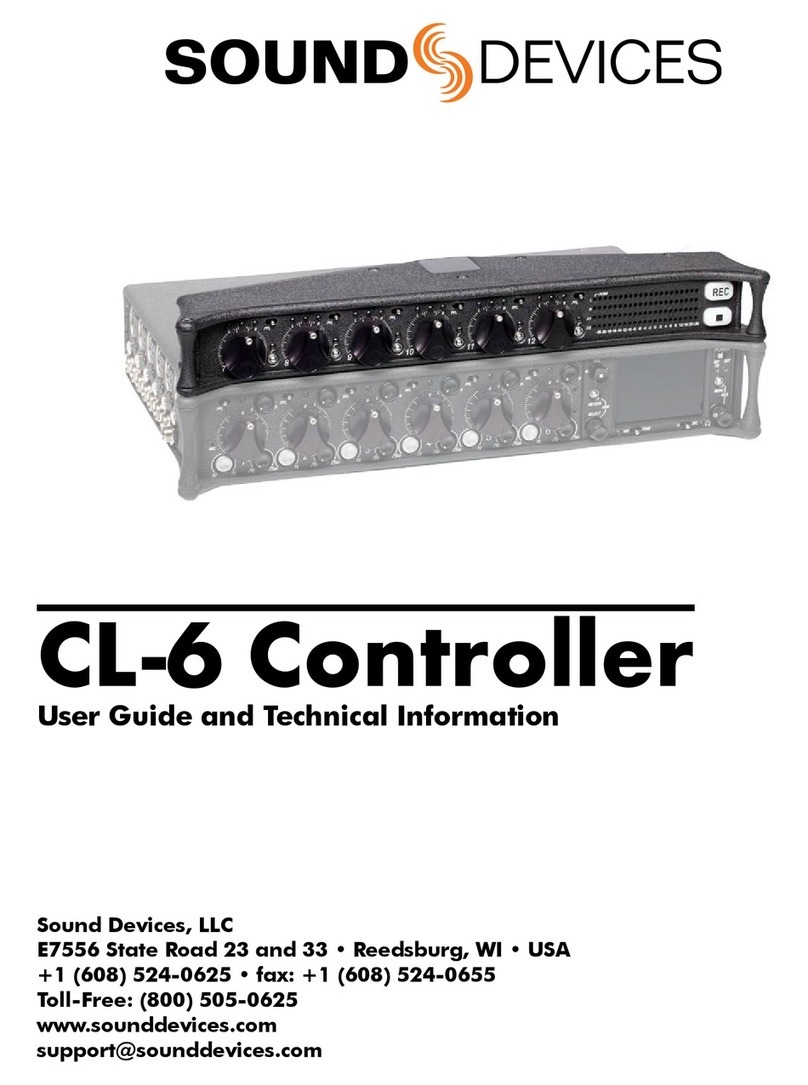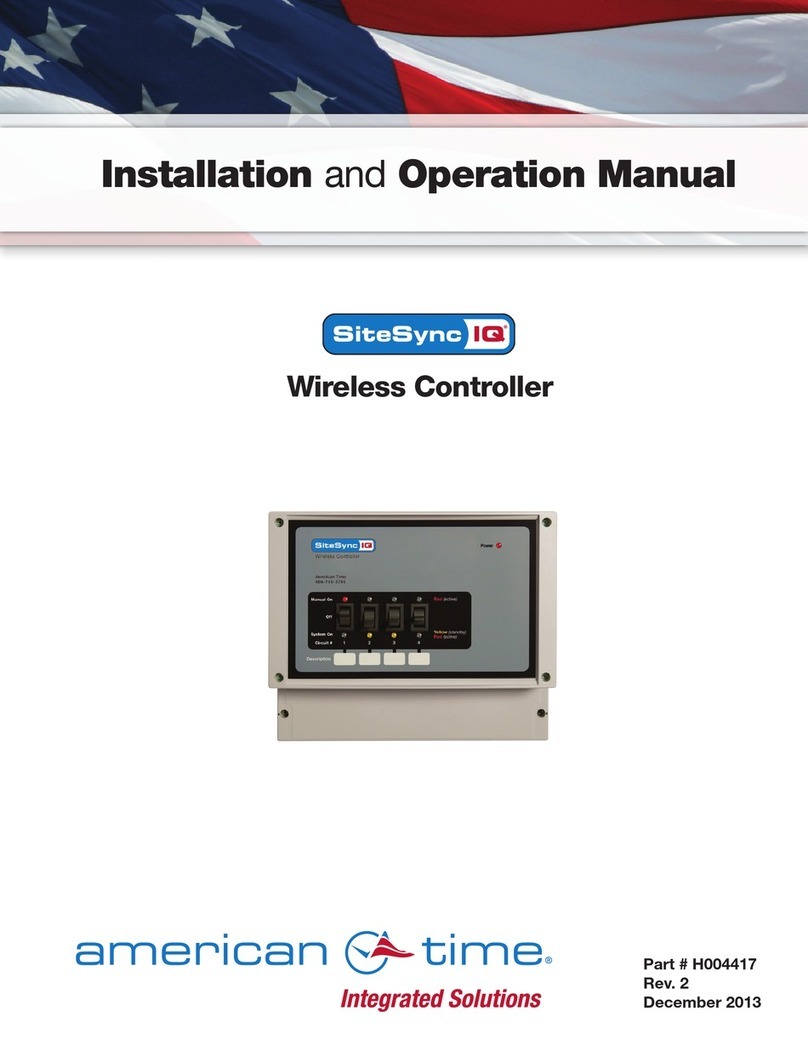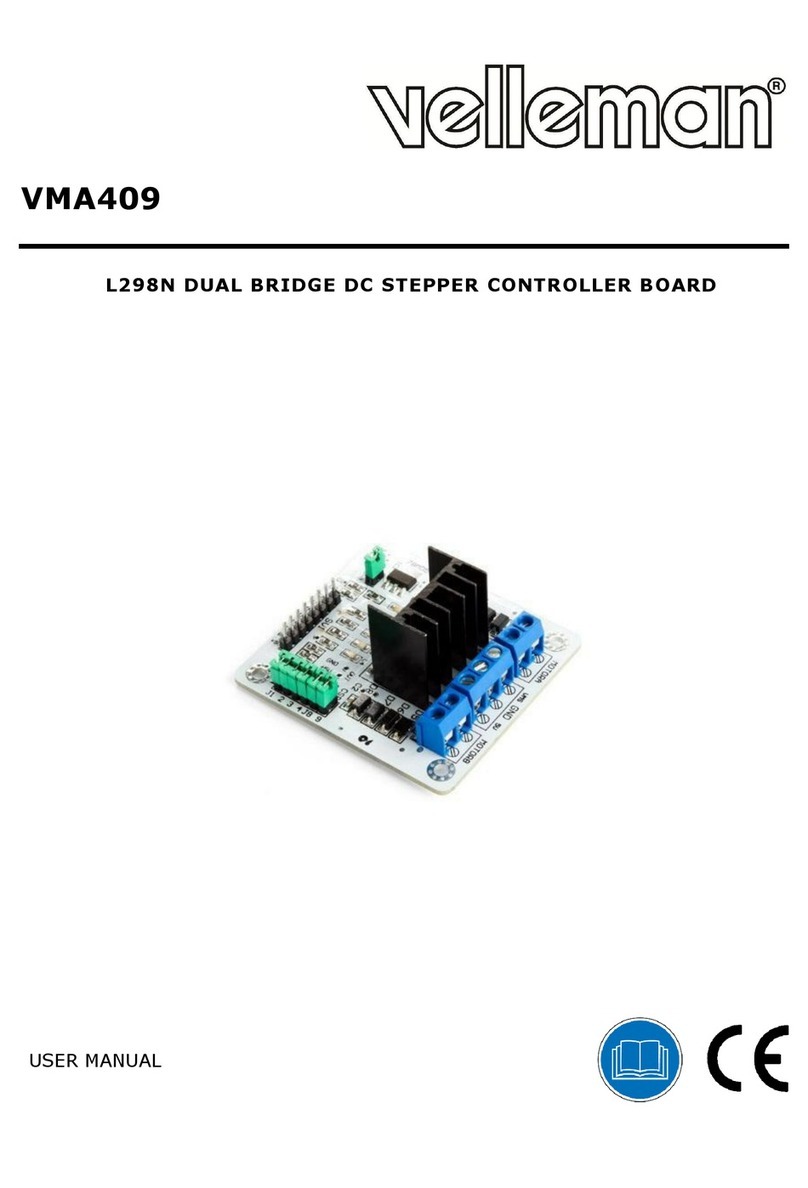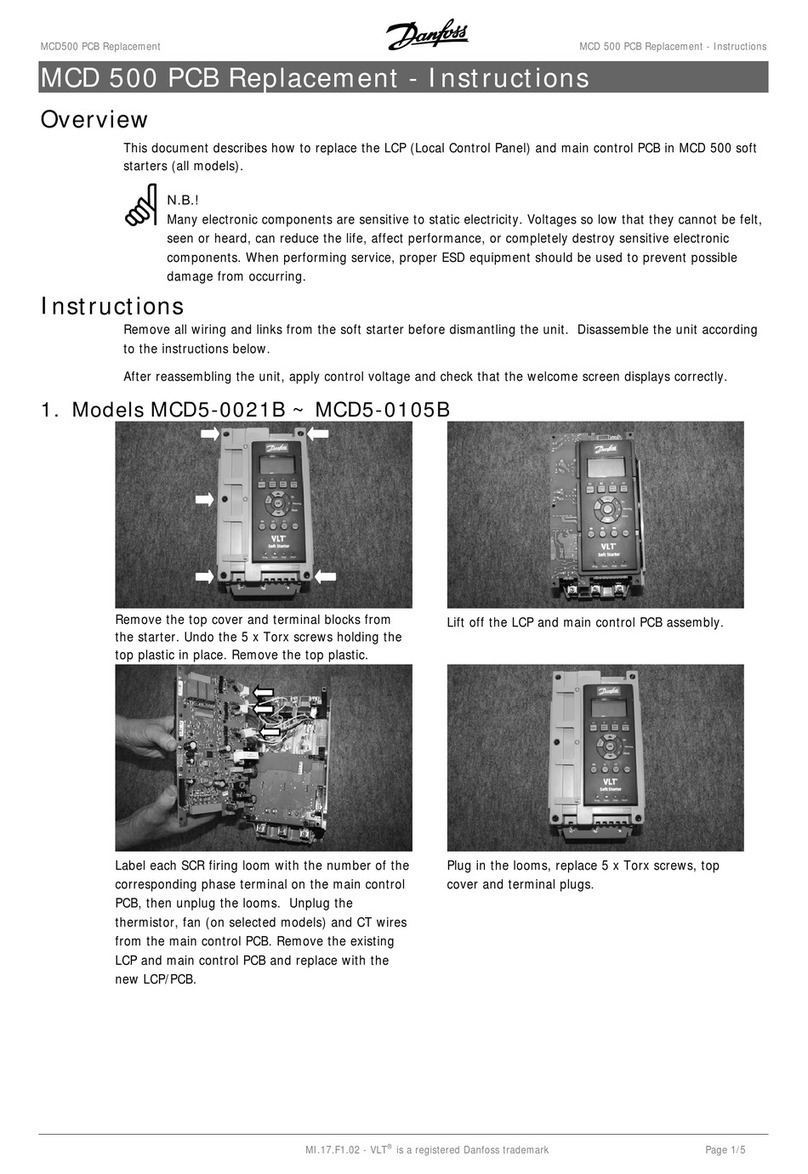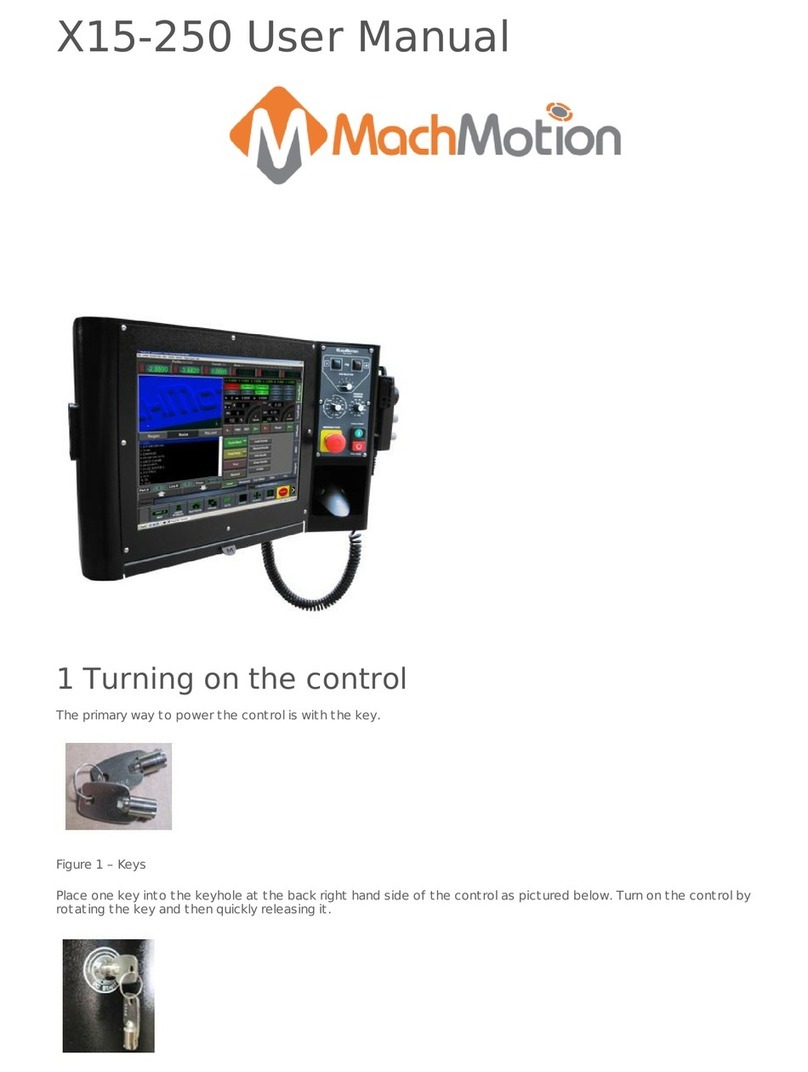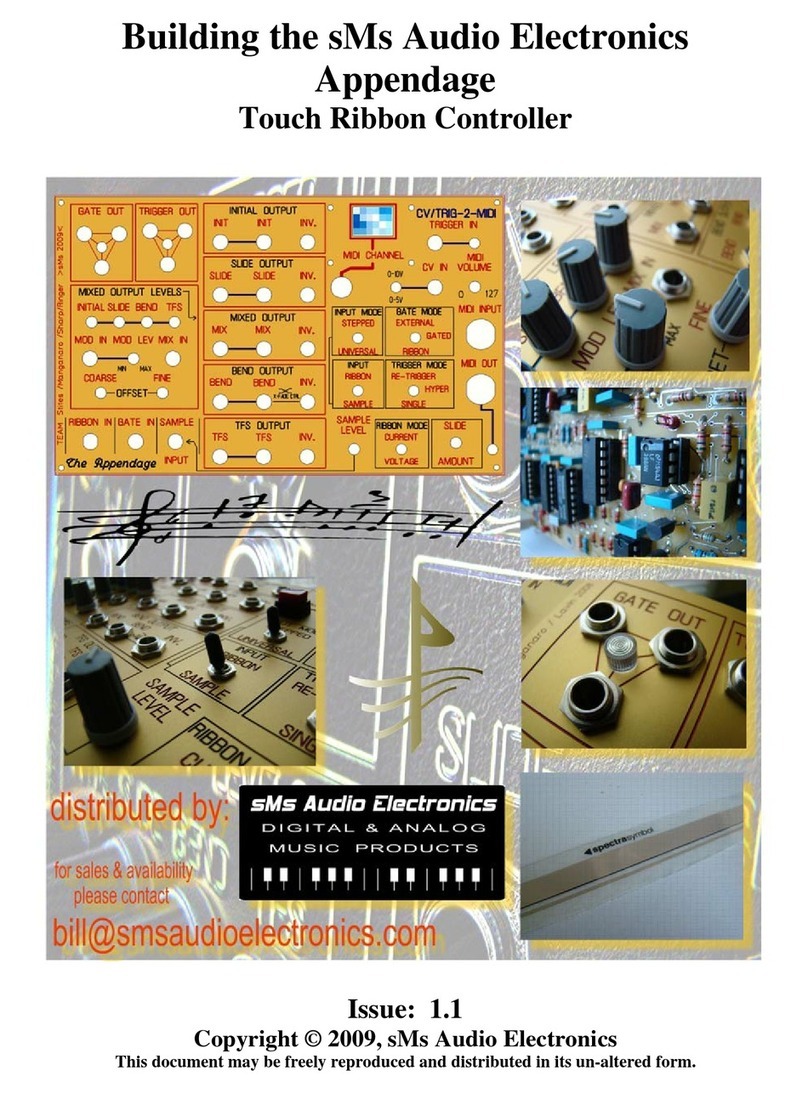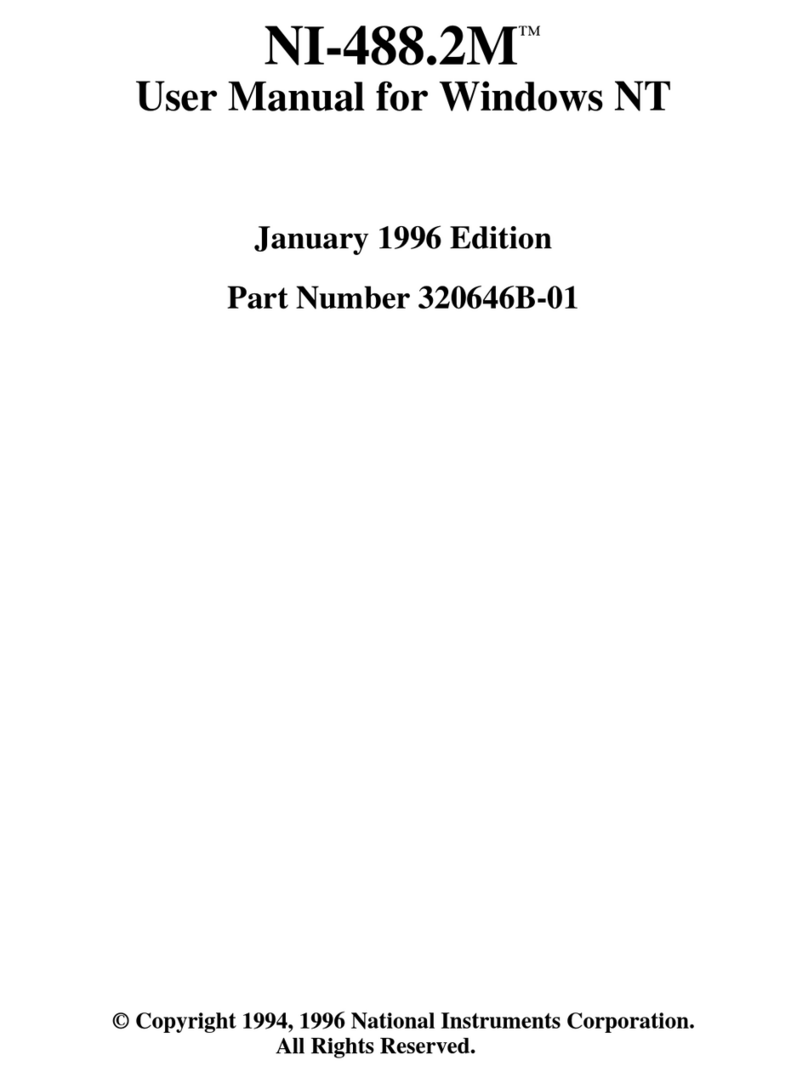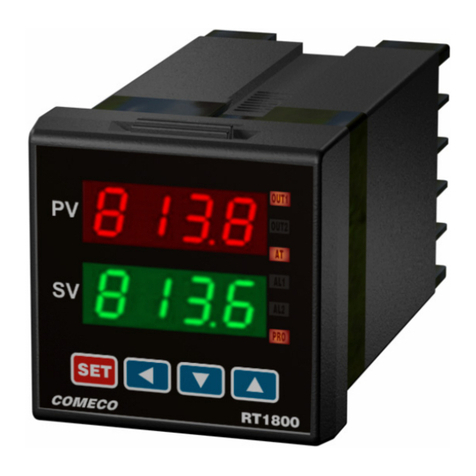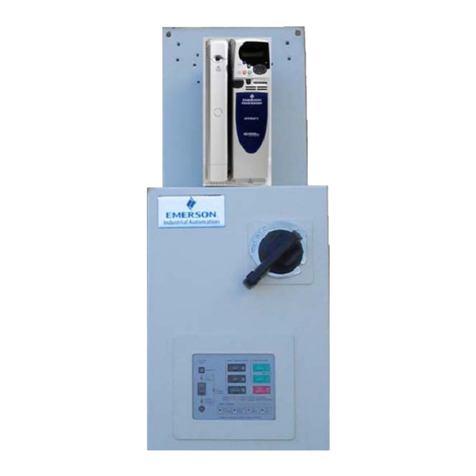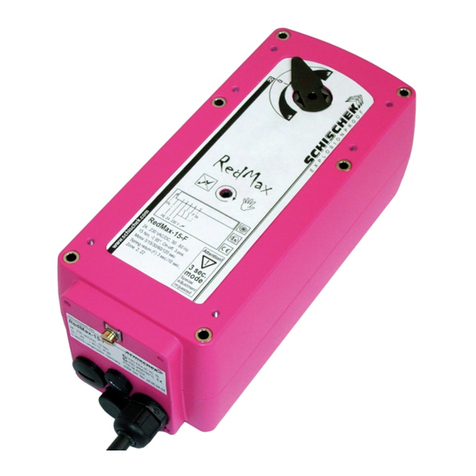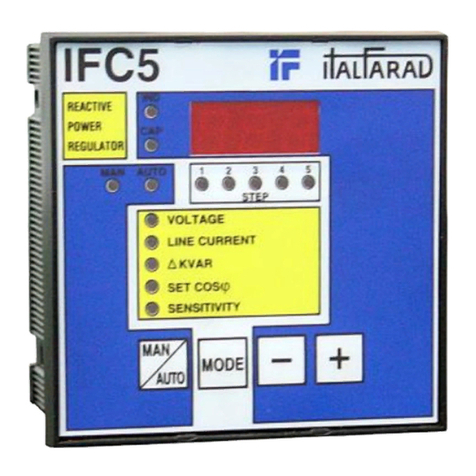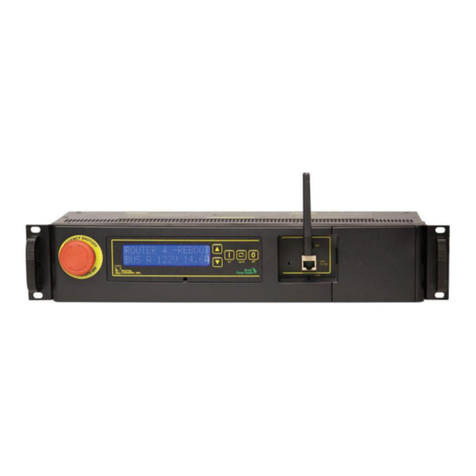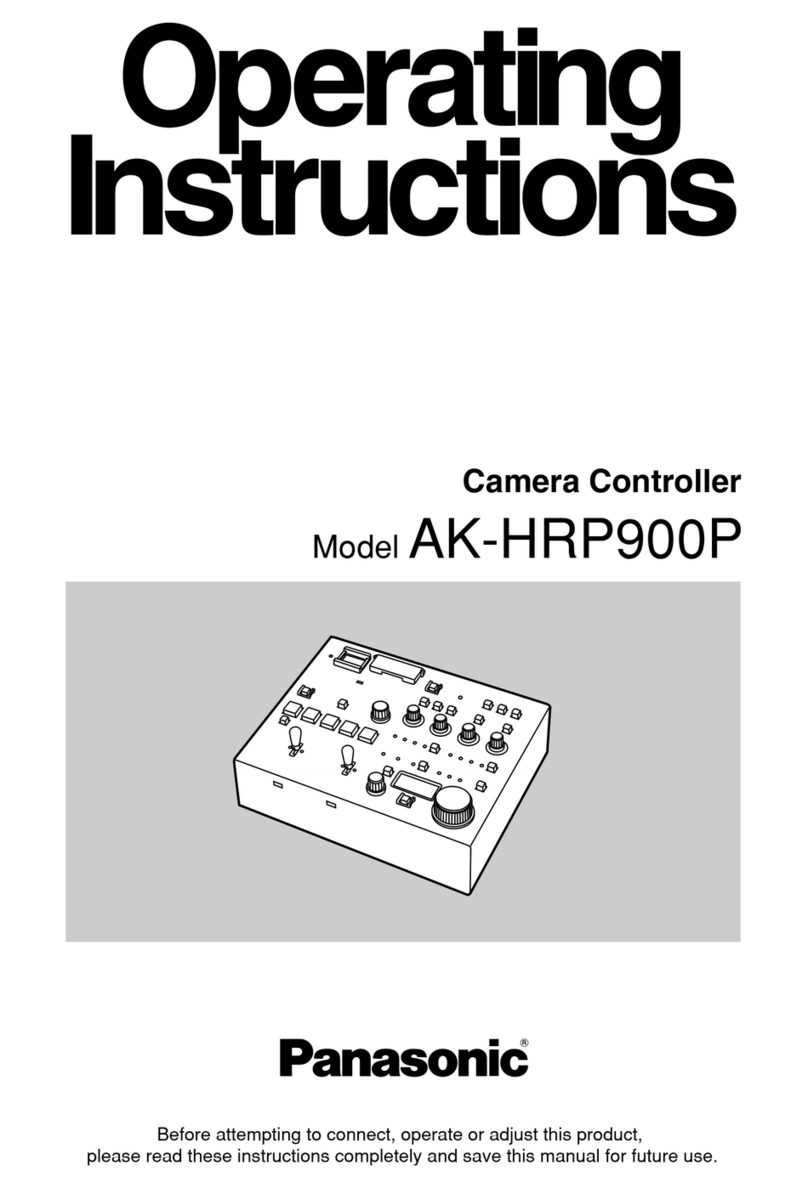Mystery MY8A User manual

Thank you for purchasing Mystery Brushless Electronic Speed Controller(ESC).
High power systems for RC model can be very dangerous and we strongly suggest that you read this manual carefully. ZTW
Model have no control over the use, installation, application, or maintenance of these products, thus no liability shall be
assumed nor accepted for any damages, losses of costs resulting from the use of this item. ny claims arising from the
operating, failure or malfunctioning etc. will be denied. We assume no liability for personal injury, property damage or
consequential damages resulting from our product or our workmanship. s far as is legally permitted, the obligation for
compensation is limited to the invoice amount of the product in question.
The Mystery ESC’s high power BEC has been specifically designed for extreme aerobatics and therefore has the capability to
support the higher momentary peak demand loads to eliminate the possibility of unwanted shutdowns, and is also capable of
supporting continuous simultaneous multiple servo operations typically found in CCPM equipped hardcore 3D E-helicopters.
Wires Connection:
The speed controller can be connected to the motor by soldering directly or with high quality connectors. lways use new
connectors, which should be soldered carefully to the cables and insulated with heat shrink tube. The maximum length of the
battery pack wires shall be within 6 inches.
Solder controller to the motor wires.
Solder appropriate connectors to the battery wires.
Insulate all solder connectors with heat shrink tubes.
Plug the “JR” connector into the receiver throttle channel.
Controller Red and Black wires connects to battery pack Red and Black wires respectively.
Specification:
Type Cont.
Current( )
Burst
Current ( )
10 sec.
Battery cell
NiXX/Lipo
Weight
(g)
BEC
Output
Size (mm)
W*L*H
User
Program
MY8 8 10 5-12 NC \ 2-4 Lipo 10 5V / 1 21 x 22 x 4 yes
MY12 12 16 5-12 NC \ 2-4 Lipo 10 5V / 1 21 x 22 x 4 yes
MY20 20 30 5-12 NC \ 2-4 Lipo 20 5V / 2 23 x 33 x 6 yes
MY30 30 40 5-12 NC \ 2-4 Lipo 25 5V / 2 23 x 43 x 6 yes
MY40 BEC 40 60 5-12 NC \ 2-4 Lipo 25 5V/ 3 23 x 43 x 6 yes
MY40 SBEC 40 60 5-18NC \ 2-6 Lipo 30 5.5V / 4 23 x 52x 7 yes
MY50 BEC 50 70 5-12NC \ 2-4 Lipo 30 5V / 3 23 x 52x 6 yes
MY50 SBEC 50 70 5-18NC \ 2-6 Lipo 30 5.5V / 4 23 x 52x 7 yes
MY50 OPTO 50 70 5-18 NC \ 2-6 Lipo 30 23 x 52x 6 yes
MY60 SBEC 60 80 5-18NC \ 2-6 Lipo 35 5.5V / 4 23 x 52x 14 yes
MY70 SBEC 70 90 5-18NC \ 2-6 Lipo 35 5.5V/4 23 x 52x 14 yes
MY85 BEC 85 100 5-12 NC \ 2-4 Lipo 47 5V /3 34 x 52x 14 yes
MY85 SBEC 85 100 5-18NC \ 2-6 Lipo 47 5.5V /4 34 x 52x 14 yes
MY85 OPTO 85 100 5-18 NC \ 2-6 Lipo 47 34 x 52x 14 yes
MY110 OPTO LV 110 120 5-18 NC \ 2-6 Lipo 75 34 x52 x 20 yes
MY100 OPTO HV 100 120 16-32NC\5-10Lipo 75 34 x52 x 20 yes
1

Features:
Extremely low internal resistance◆
Super smooth and accurate throttle linearity◆
Safety thermal over-load protection◆
uto throttle shut down in signal lose situation◆
Supports high RPM motors◆
Power arming protection (prevents the motor from accidentally running when switched ON)◆
New dvanced programming software◆
ur ESC allows you to program all functions to fit your specific needs,which makes it very efficient and user friendly:
1.User programmable brake setting (we recommend using brake for only folding props applications)
2.User programmable battery type(LiPo or NiCd/NiMh)
3.User programmable low voltage cutoff setting
4.User programmable factory default setup restore
5.User programmable timing settings (to enhance ESC efficiency and smoothness)
6.User programmable soft acceleration start ups (for delicate gearbox and helicopter applications)
7.User programmable governor mode(for helicopter applications)
8.User programmable motor rotation(clockwise\counterclockwise)
9.User programmable switching frequency
10.User programmable low voltage cutoff type (power reduction orimmediate shutdown)
Settings:
1.Brake: N/ FF
* ON-Sets the propeller to the brake position when the throttle stickis at the minimum position (Recommended for folding
props).
* OFF-Sets the propeller to freewheel when the throttle stick is at the minimum position.
2.Battery type: LiPo or NiCad/NiMh
* NiCad/NiMh – Sets Low Voltage protection threshold for NiCad/NiMh cells.
* LiPo – Sets Low voltage protection threshold for LiPo cells and automatically detects the number of cells within the pack.
Note: Selecting the NiCad/NiMh option for the battery type, triggers the ESC to automatically set the cutoff threshold to the
factory default of 65%. The cutoff threshold can then be subsequently altered through the Low Voltage protection function, if
required. The ESC will read the initial voltage of the NiCad/NiMh pack once it is plugged in and the voltage read will then be
used as a reference for the cutoff voltage threshold.
3.Low Voltage Protection Threshold ( Cutoff Threshold ):
Low / Medium / High
1) For Li-xx packs- number of cells are automatically calculated and requires no user input apart from defining the battery type.
This ESC provides 3 setting options for the low voltage protection threshold ; Low (2.8V)/ Medium (3.0V)/ High (3.2V). For
example : the voltage cutoff options for an 11.1V/ 3 cell Li-Po pack would be 8.4V (Low)/ 9.0V(Med)/ 9.6V(High)
2) For Ni-xx packs-low / medium / high cutoff voltages are 50%/65%/65% of the initial voltage of the battery pack.. For
example: fully charged 6 cell NiMh pack’s voltage is 1.44V x 6=8.64V,when “LOW” cutoff voltage is set, the cutoff voltage
is: 8.64V x 50%=4.3V and when “Medium” of “High” is set, the cutoff voltage is now 8.64V X 65%=5.61V.
2

4. Restore factory setup defaults:
Restore- Sets the ESC back to factory default settings;
Brake: off
Battery type Detect: LiPo with utomatic Cell
Low voltage cutoff threshold: Medium (3.0V/65%)
Timing setup: utomatic
Soft cceleration Start Up: Medium
Governor mode : OFF
Frequency : 8kHz
Low voltage cutoff type: Reduce power
5.Timing setup : Automatic/ Low / High.
* utomatic – ESC automatically determines the optimum motor timing
* Low (7-22 deg) – Setting for most 2 pole motors.
* High(22-30 deg)-setting for motors with 6 or more poles.
In most cases, automatic timing works well for all types of motors.However for high efficiency we recommend the Low timing
setting for 2 pole motors (general in-runners) and high timing for 6 poles and above (general outrunners). For higher speed,
High timing can be set. Some motors require different timing setups therefore we suggest you to follow the manufacturer
recommended setup or use the automatic timing setting if you are unsure.
Note: Run your motor on the ground first after making any changes to your motor timing!
6.Soft Acceleration Start ups: Very Soft / Soft Acceleration/ Start Acceleration
* Very Soft – Provides initial slow 1.5 sec ramp-up from start to full rpm intended to protect delicate gears from stripping under
instant load. This setting is recommended for either fixed wing models equipped with gearboxes and / or helicopters.
* Soft cceleration- Provides initial slow 1 sec ramp-up from start to full rpm. This setting is recommended for either fixed
wing models equipped with gearboxes and or helicopters.
* Start cceleration – Provides quick acceleration start ups with a linear throttle response. This is recommended for fixed wing
models fitted with direct drive setups.
7.Active RPM Control (Heli Governor mode)
* rpm control off
* first range: There will be a 5-second delay from start to full rpm, but if the throttle is cutoff after starting, then the next start will be
as normal start.
* second range: There will be a 15-second delay from start to full rpm, but if the throttle is cutoff after starting, then the next start
will be as normal start.
Note: Once the Governor Mode is enabled, the ESC’s Brake and Low Voltage Cutoff Type settings will automatically be reset
to No Brake and Reduce Power respectively regardless of what settings they were previously set.
8.Motor Rotation: Reverse
In most cases motor rotation is usually reversed by swapping two motor wires. However, in cases where the motor cables have
been directly soldered the ESC cables, motor rotation can be reversed by changing the value of setting on the ESC.
3

9.Switching Frequency : 8kHz/16kHz
* 8kHz – Sets ESC switching frequency for 2 pole motors, e.g. in-runners.
* 16kHz – Sets ESC switching frequency for motors with more than 2 poles, e.g. out-runners.
lthough 16kHz is more efficient with our Thrust motors, the setup
default is 8kHz due to the higher RF noises caused at 16kHz.
10.Low Voltage Cutoff Type : Reduce Power / Hard cutoff
* Reduce Power – ESC reduces motor power when the pre-set (recommended).
•Hard Cutoff – ESC instantly cuts motor power when the pre-set Low Voltage Protection Threshold value is reached.
•
Programming Mode Audible Tones
Programming Mode udible Tones ESC Functions
1 Throttle Calibration
(within the first 4 Sec )● ● ● ●
Brake
_ * _ * _ * _ * Brake On /Off
2 Battery type
~ ~ ~ ~ NiCad
~~ ~~ ~~ ~~ LiPo
3 Low Voltage Cutoff Threshold
*_ _* *_ _* *_ _* *_ _* Low2.8V/50%
*_ _ _* *_ _ _* *_ _ _* *_ _ _* Medium3.0V/60%
*_ _ _ _* *_ _ _ _* *_ _ _ _* *_ _ _ _* High3.2V/65%
4 Restore Factory Setup Defaults
— — — — Restore
5 Timing Setup
– – – – utomatic (7-30°)
– – – – – – – – Low (7-22°)
– – – – – – – – – – – – High (22-30°)
6 Soft cceleration Start Ups
∨∨ ∨∨ ∨∨ ∨∨ Very Soft
∨ ∨ ∨ ∨ Soft cceleration
∨∨∨ ∨∨∨ ∨∨∨ ∨∨∨ Start cceleration
7 Governor Mode
_*_ _*_ _*_ _*_ Rpm off
_**_ _**_ _**_ _**_ Heli first range
_***_ _***_ _***_ _***_ Heli second range
8 Motor Rotation
W W W W Positive/ Reverse
9 Switching Frequency
// // // // 8kHz
\\ \\ \\ \\ 16kHz
10 Low Voltage Cutoff Type
_ˉ _ˉ _ˉ _ˉ Reduce Power
ˉ_ ˉ_ ˉ_ ˉ_ Hard Cut Off
Using Your New ESC
Improper polarity or short circuit will damage the ESC therefore it is your responsibility to double check all plugs for proper
polarity and firm fit BEEORE connecting the battery pack.
4

Alert Tones
The ZTW ESC is equipped with audible alert tones to indicate abnormal conditions at power up.
If ESC can't enter into working mode after powering up, it indicates that you have not setup throttle calibration.
2. Continuous beeping tone (****) – Indicates that throttle stick is not in the minimum position.
3. Single beeping tone followed by a one second pause (* * * *)– Indicates that the battery pack voltage is not within the
acceptable range. (The ESC automatically checks and verifies the battery voltage once the battery is connected).
4. single beeping tone followed by a short pause (* * * *) – Indicates that the ESC is unable to detect the normal throttle
signal from the receiver.
Built-in Intelligent ESC Safety Functions
1. Over-heat protection: When the temperature of ESC exceed 110 deg C, the ESC will reduce the output power to allow it too
cool.
2. Lost Throttle signal protection: The ESC will automatically reduces output power to the motor when it detects a lost of
throttle signal for 2 second, a subsequent loss of throttle signal beyond 2 seconds, will cause the ESC automatically to cut
power to the motor.
Powering up the ESC for the first time and setting the Automatic Throttle Calibration
The ZTW ESC features utomatic Throttle Calibration to attain the smoothest throttle response and resolution throughout the
entire throttle range of your transmitter. This step is done once to allow the ESC to “learn and memorize” your Transmitter’s
throttle output signals and only repeated if you change your transmitter.
1.Switch your Transmitter ON and set the throttle stick to its maximum position.
2.Connect the battery pack to the ESC. Wait for about 2 seconds, the motor will beep for twice, then put the throttle in the minimum
position, the motor will also beep, which indicates that your ESC has got the signal range of the throttle from your transmitter.
The throttle is now calibrated and your ESC is ready for operation.
Normal ESC start up procedure:
1. Switch your Transmitter N and set the throttle to its minimum position.
2. Connect the battery pack to the ESC.
3. When the ESC is first powered up, it emits two sets of audible tones in succession indicating the status of its programming
state.
* The first set of tones denotes the number of cells in the LiPo pack connected to the ESC. (Three beeps (***)indicates a 3 cell
LiPo pack while 4 beeps (****) indicates a 4 cell LiPo pack).
* The second set denoting Brake status (one beep(*) for Brake “ON” and two beeps (**) for Brake “OFF”).
*The ESC is now ready for use.
5

Entering the Programming Mode:
1. Switch your Transmitter N and set the throttle to its maximum position.
2. Connect the battery pack to the ESC.
3. Wait until you hear two short beeps (_ _**) confirming that the ESC has now entered the programming mode.
4. If within 5 seconds, the throttle stick is lowered to its minimum position, an audible tone is emitted confirming that the
throttle calibration setting has changed. If the throttle stick is left in the maximum position beyond 5 seconds, the ESC will
begin the sequence from one function and its associated setting options to another. (Please refer to the table below to cross
reference the functions with the audible tones).
5. When the desired tone for the function and setting option is reached, move the throttle stick down to its minimum position.
ESC will emit two beeps (**) confirming the new setting has been stored.
6. The ESC only allows the setting of one function at a time.
Therefore should you require making changes to other function, disconnect the battery pack and wait 5 seconds to
reconnect the battery and repeat the above steps.
General Safety Precautions
Do not install the propeller (fixed wing) or drive pinion(helicopter) on the motor when you test the ESC and motor for the first time to
verify the correct settings on your radio. Only install your propeller or pinion after you have confirmed that the settings on
your radio is correct.
●Never use ruptured or punctured battery cells.
●Never use battery packs that are known to overheat.
●Never short circuit battery or motor terminals.
●lways use proper insulation material for cable insulation.
●lways use proper cable connetors.
●Do not exceed the number of cells or servos specified by the ESC.
Wrong battery polarity will damage the ESC and void the warranty.
●Install the ESC in a suitable location with adequate ventilation for cooling. This ESC has a built-in over temperature cutoff
protection feature that will immediately cut power to the motor once the ESC temperature exceeds the 230 Deg F/ 110 Deg
C high temperature limit.
●Use only batteries that are supported by the ESC and ensure the correct polarity before connecting.
●Switch your Transmitter ON and ensure the throttle stick is in the minimum position before connecting the battery pack.
●Never switch your transmitter FF while the battery is connected to your ESC.
●Only connect your battery pack just before flying and do not leave your battery pack connected after flying.
●Handle your model with extreme care once the battery pack is connected and keep away from the propeller at all times.
Never stand in-line or directly in front of any rotating parts.
●Do not immerse the ESC underwater while powered up.
●Do fly at a designated flying site and abide by the rules and guidelines set by your flying club.
6

Trouble Shooting
Trouble Possible Reason Action
Motor doesn’t work, but there are
audible tones of automatically
detection of the number of cells after
powering up ESC.
The ESC throttle calibration has not set up. Set up the ESC throttle
calibration.
Motor doesn’t work and no audible tone
emitted after connectin the battery.
Servos are not workin either.
Poor/loose Connection between battery
Pack and ESC.
Clean connector terminals or
replace connector.
No power Replace with a freshly char ed
battery pack
Poor soldered connections (dry joints) Re-solder the cable connections
Wron battery cable polarity Check and verify cable polarity
ESC throttle cable connected to receiver in
the reverse polarity
Check the ESC cable connected to
the ESC to ensure the connectors
are in the correct polarity.
Faulty ESC Replace ESC
Motor doesn’t work and no audible tone
emitted after connectin the battery
BUT servos are workin .
Motor doesn’t work after powerin up
the ESC. An alert tone with two beepin
bones followed by a short pause(** **
** **) is emitted.
Poor / loose connection between ESC and
motor
Clean connector terminals or
replace connectors
Burnt motor coils Replace motor
Poor soldered connections(dry joints)
The battery pack volta e is not within the
acceptable ran e.
Re-solder the cable connections
Replace with a freshly char ed
battery pack
Check battery pack volta e
Trouble Possible Reason Action
Motor doesn’t work after powerin up
the ESC. An alert tone with a sin le
beepin tone followed by a short pause
(* * * * ) is emitted.
The ESC is unable to detect
the normal throttle si nal
from the receiver
Check and verify that the ESC cable is connected
to the Throttle channel on the receiver.
Check the transmitter and receiver to verify that there
is throttle signal output.
(Connect a spare servo to verify throttle channel
operation)
Motor doesn’t work after powerin up
the ESC .An alert tone with continuous
beepin tones
(****) is emitted.
The throttle stick is not in
the minimum position at
power up.
Move the throttle stick to the minimum position.
Motor doesn’t work after powerin up
the ESC. ESC emits two lon audible
tones followed by two short beeps(_ _ *
* )
Reversed throttle channel
caused the ESC to enter the
pro rammin mode.
Enter the servo reverse menu on your transmitter
and reverse the throttle channel.
Note: For Futaba radios set the throttle channel to
Reverse.
7

Trouble Possible Reason Action
Motor runs in reverse
rotation Motor stops
running in flight.
Wrong cables polarity
between the ESC and the
motor.
Swap any two of the three cable connections between the ESC and the
Motor or access the Motor Rotation function via the ESC programming
mode and change the pre-set parameters.
Lost throttle signal Check proper operation of the radio equipment.
Check the placement of the ESC and the Receiver and check the route of
the receiver’s aerial and ESC cables to ensure there is adequate separation
to prevent RF interference .
Install a ferrite ring on the ESC’s throttle cable.
Battery Pack voltage has
reached the Low Voltage
Protection threshold.
Land the model immediately and replace the battery pack.
Possible bad cable
connection
Check and verify the integrity of the cable connections
Trouble Possible Reason Action
Motor
restarts
abnormall
y ESC
Overheats
Possible RF
Interference at the
flyin field.
The normal operation of the ESC may be susceptible to surroundin RF interference.
Restart the ESC to resume normal operation on the round to verify recurrence. If the
problem persists, test the operation of the ESC at a different flyin field.
Inadequate
Ventilation
Relocate the ESC to allow better ventilation
Servos drawin too
much current and over
loadin the ESC.
Use servos that are adequately sized for the ESC. The maximum BEC current drawn
should be within the BEC limits.
Over sized motor or
prop
Prop down or resize the motor
Shenzhen Sudan Yuanda Model Co.,Ltd
Address: Room 805, 8F, Economic uilding, Huaqiang Road North, 518053, Shenzhen, China
TEL: (86)755-82796646 (86)755-82798347-812
FAX: (86)755-82796134
WE SITE: www.777model.com www.777model.cn
www.999binoculars.com
Email: [email protected]
8
This manual suits for next models
15
Table of contents
